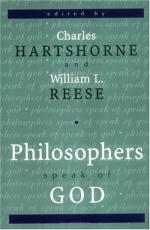|
This section contains 195 words (approx. 1 page at 300 words per page) |
World of Invention on Charles L. Reese
The developer of nonfreezing dynamite (safe for use in cold-weather situations), permissible explosives (for use in underground coal mines), and the industrial explosive sodatol (created from TNT and picric acid), Reese is an important American chemist of the early twentieth century.
Born in Baltimore, Maryland, Reese received his doctorate in Heidelberg, Germany, while studying under Robert Bunsen, inventor of the spectroscope and Bunsen burner. In 1902, after a brief but distinguished career in academics, he assumed the position of chemical director at the Du Pont Company, which he held until his retirement in 1924.
Virtually all of the achievements for which Reese is known came through his work at Du Pont, where he oversaw the rapid expansion of one of the largest and most advanced research departments in the world. He is less well known for his involvement with efforts during World War I to secretly escort two German scientists, who possessed valuable knowledge regarding dyestuff and synthetic-nitrates, to the United States. This successful mission may well have been one of the important turning points for both the war and the field of chemistry, which had long been dominated by the Germans. He died in 1940.
|
This section contains 195 words (approx. 1 page at 300 words per page) |


